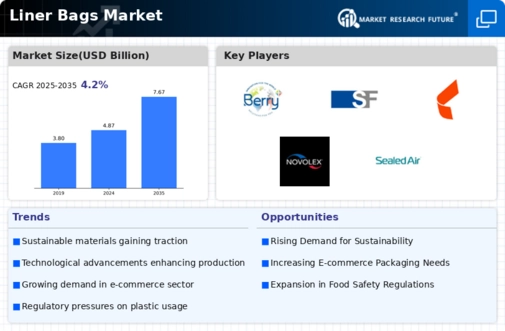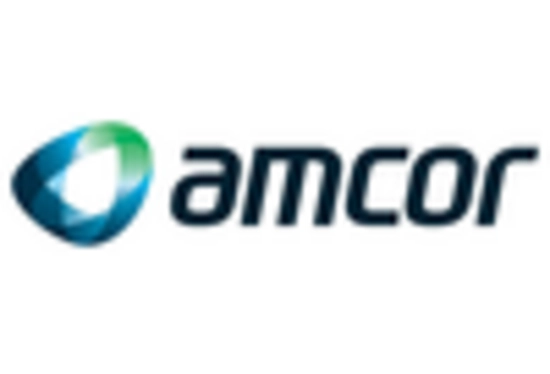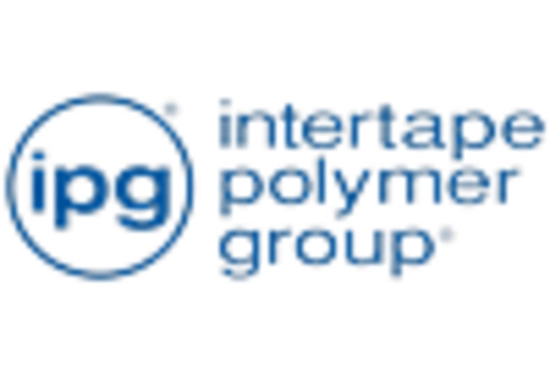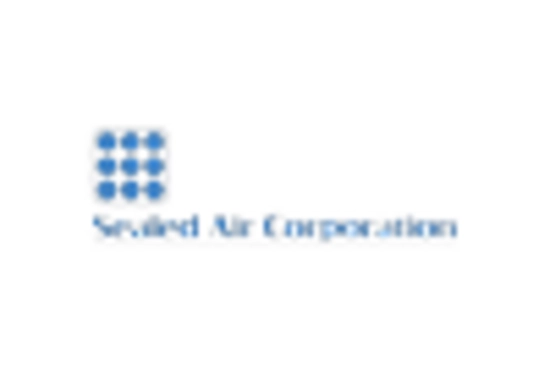Technological Innovations
Technological advancements are reshaping the Liner Bags Market, introducing new materials and manufacturing processes that enhance product performance. Innovations such as the development of biodegradable liner bags and advanced sealing technologies are gaining traction. These advancements not only improve the durability and functionality of liner bags but also address environmental concerns. For instance, the introduction of smart packaging technologies, which can monitor the condition of the contents, is likely to create new opportunities within the industry. Market data indicates that the adoption of such technologies could lead to a 10% increase in market share for companies that embrace innovation. As technology continues to evolve, it is expected that the Liner Bags Market will witness further growth driven by these advancements.
Sustainability Initiatives
The increasing emphasis on sustainability appears to be a pivotal driver for the Liner Bags Market. As consumers and businesses alike become more environmentally conscious, the demand for eco-friendly packaging solutions rises. Liner bags, often made from recyclable materials, align with these sustainability goals. According to recent data, the market for sustainable packaging is projected to grow at a compound annual growth rate of approximately 7.5% over the next five years. This trend suggests that companies investing in sustainable liner bags may gain a competitive edge, as they cater to a growing segment of eco-aware consumers. Furthermore, regulatory pressures aimed at reducing plastic waste could further bolster the demand for sustainable liner bags, making this a critical driver in the industry.
Diverse End-User Industries
The Liner Bags Market benefits from its applicability across a wide range of end-user sectors, including food and beverage, pharmaceuticals, and chemicals. Each of these industries has unique packaging requirements, and liner bags offer versatile solutions that meet these diverse needs. For instance, in the food sector, the demand for safe and hygienic packaging is paramount, while the pharmaceutical industry requires compliance with stringent regulations. Market analysis indicates that the food and beverage sector alone accounts for a substantial share of the liner bags market, projected to reach approximately 30% by 2026. This diversity in applications not only stabilizes the market but also opens avenues for innovation and growth, as manufacturers tailor their products to meet specific industry standards.
Rising Demand in E-commerce
The surge in e-commerce activities is significantly influencing the Liner Bags Market. As online shopping continues to expand, the need for efficient and protective packaging solutions becomes paramount. Liner bags, known for their lightweight and protective qualities, are increasingly utilized in the shipping of various products. Recent statistics suggest that the e-commerce sector is expected to grow by over 15% annually, which directly correlates with the rising demand for liner bags. This trend indicates that businesses engaged in e-commerce are likely to seek reliable packaging solutions, thereby driving the growth of the liner bags market. The adaptability of liner bags to various product types further enhances their appeal in this rapidly evolving market.
Regulatory Compliance and Safety Standards
Regulatory compliance is becoming increasingly critical in the Liner Bags Market, as governments worldwide implement stricter safety and environmental regulations. Companies are required to adhere to these standards, which often necessitates the use of high-quality, compliant packaging solutions. Liner bags that meet these regulations are likely to see heightened demand, as businesses strive to avoid penalties and ensure product safety. Recent data indicates that the market for compliant packaging solutions is expected to grow by 8% annually, driven by these regulatory pressures. This trend suggests that manufacturers who prioritize compliance in their liner bag offerings may gain a competitive advantage, positioning themselves favorably in a market that is becoming more focused on safety and sustainability.

















Leave a Comment